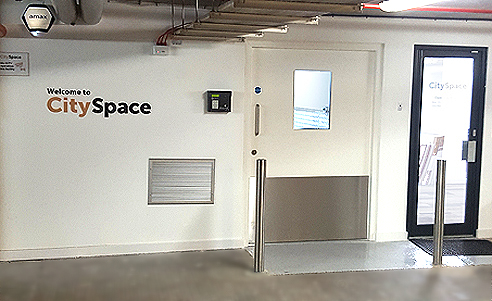Emerging Trends in Bank Security Systems
The evolution of bank security systems has come a long way from traditional lock-and-key mechanisms to an era where technological marvels dictate the level of security. A well-protected bank not only safeguards monetary assets but also amplifies customer trust and adherence to regulatory compliances. The recent decade has witnessed a surge in advancements in technology, forging a path for bank security systems that are both innovative and robust.
Biometric Security: The Future of Identification
Biometric security has swiftly carved out a space for itself in the realm of bank security, owing to its unmatched ability to provide secure and personalised access control. Utilising features that are unique to each individual – such as fingerprints, retina scans, and facial recognition – biometric security systems provide a level of personalisation and security that is currently unparalleled. Several banks worldwide have already adopted biometric access controls, and the forthcoming years are anticipated to witness a wider integration of this technology, especially in the United Kingdom, where both private and commercial banks are steadily embracing advanced biometric systems.
CCTV Systems: Enhanced Monitoring and Surveillance
The perennial eyes that guarantee the continuous surveillance of financial institutions, CCTV systems, have also witnessed evolution and enhancement. With the integration of Artificial Intelligence (AI) and Machine Learning (ML), modern CCTV systems are not merely recording devices but analytical tools that can predict and alert authorities about suspicious activities in real-time. For instance, AI-integrated CCTV systems can identify suspicious movement patterns, unattended objects, or mask the identity of individuals under protection, ensuring a smarter and more proactive approach to security.
Advanced Door Entry Systems: Reinforcing Physical Security
While technological advancements have paved the way for innovative digital security solutions, reinforcing physical security remains a pivotal aspect of a comprehensive bank security strategy. Advanced door entry systems, which leverage technology such as facial recognition, smart cards, and multi-factor authentication, ensure that access is restricted to authorised personnel only. The UK Finance report stated that financial firms were heavily investing in advanced security, including enhanced door entry systems, to counteract physical breaches effectively. The incorporation of these advanced systems acts as the first line of defence, fortifying the bank premises against unauthorized entry and potential threats.

Cyber-Physical Security Systems: Bridging the Digital and Physical World
In recent years, the converging worlds of physical and cyber-security have given rise to cyber-physical systems that reinforce the physical security infrastructure of banking institutions. Cyber-physical security systems encompass strategies that harmonise digital and physical security protocols, ensuring that the technologies deployed for physical security, such as CCTV, biometric systems, and door entry systems, are safeguarded against cyber threats. An interconnected system, wherein the physical and cyber domains seamlessly merge, ensures that vulnerabilities in the digital realm do not compromise the physical security of the banking institution.
Personalisation in Security Protocols: A Tailored Approach to Safety
An enhanced focus on personalisation in bank security systems is redefining how security protocols are implemented and managed. Tailoring security protocols to specific threats, locations, and even individual personnel needs ensures that the security measures in place are as effective and efficient as possible. Personalisation could encompass customised access controls, wherein different levels of access are granted based on the role and necessity of personnel. It may also extend to customer interfaces, where multifactor authentication, personalised alerts, and customer-specific security measures are progressively becoming standard. The objective is to cultivate a security environment that is not only robust but also uniquely suited to the specific needs and challenges of the bank.
Adopting a Proactive Approach: Anticipation and Preparedness
Transitioning from a reactive to a proactive security model stands paramount in ensuring that bank security systems remain a step ahead of potential threats. Advanced analytics, powered by AI and ML, facilitate the prediction of security vulnerabilities by analysing patterns and trends from an extensive range of data. This predictive model enables banks to anticipate potential breaches and fortify their security apparatus accordingly. Real-time threat intelligence, constant monitoring, and automated alerts further contribute towards developing a bank security model that actively anticipates, rather than merely responds to, security threats. This shift towards a more proactive model of operation is pivotal in safeguarding assets and information in an ever-evolving threat landscape.
Integrating Technologies for a Fortified Future
Bank security systems are gradually transitioning towards a future where multiple technologies will be intertwined to form a multi-layered security network. The amalgamation of biometric security, enhanced CCTV surveillance, and advanced door entry systems will ensure a future where banks can safeguard their assets and customers more effectively. Moreover, integrating these technologies with cyber-security measures will pave the way for a holistic and fortified approach to bank security.
Navigating through the future of bank security systems necessitates a strategic alignment with innovative trends and a forward-thinking approach. Embracing and integrating these emerging technologies will not only enhance security but will also project a commitment to safety, reliability, and innovation towards customers and stakeholders alike. As we progress into the future, the continuous evolution and adaptation of these security systems will undoubtedly play a pivotal role in shaping a secure banking environment amidst the evolving challenges.





